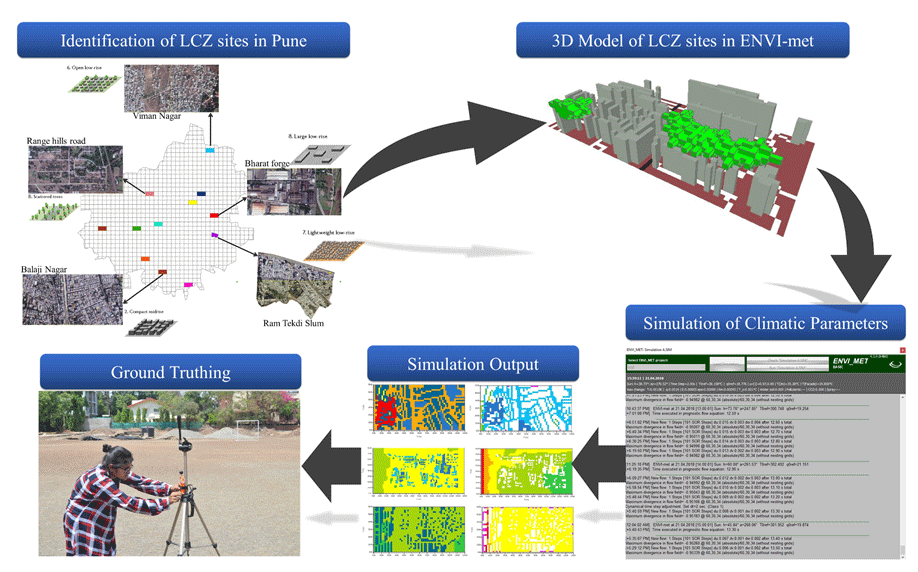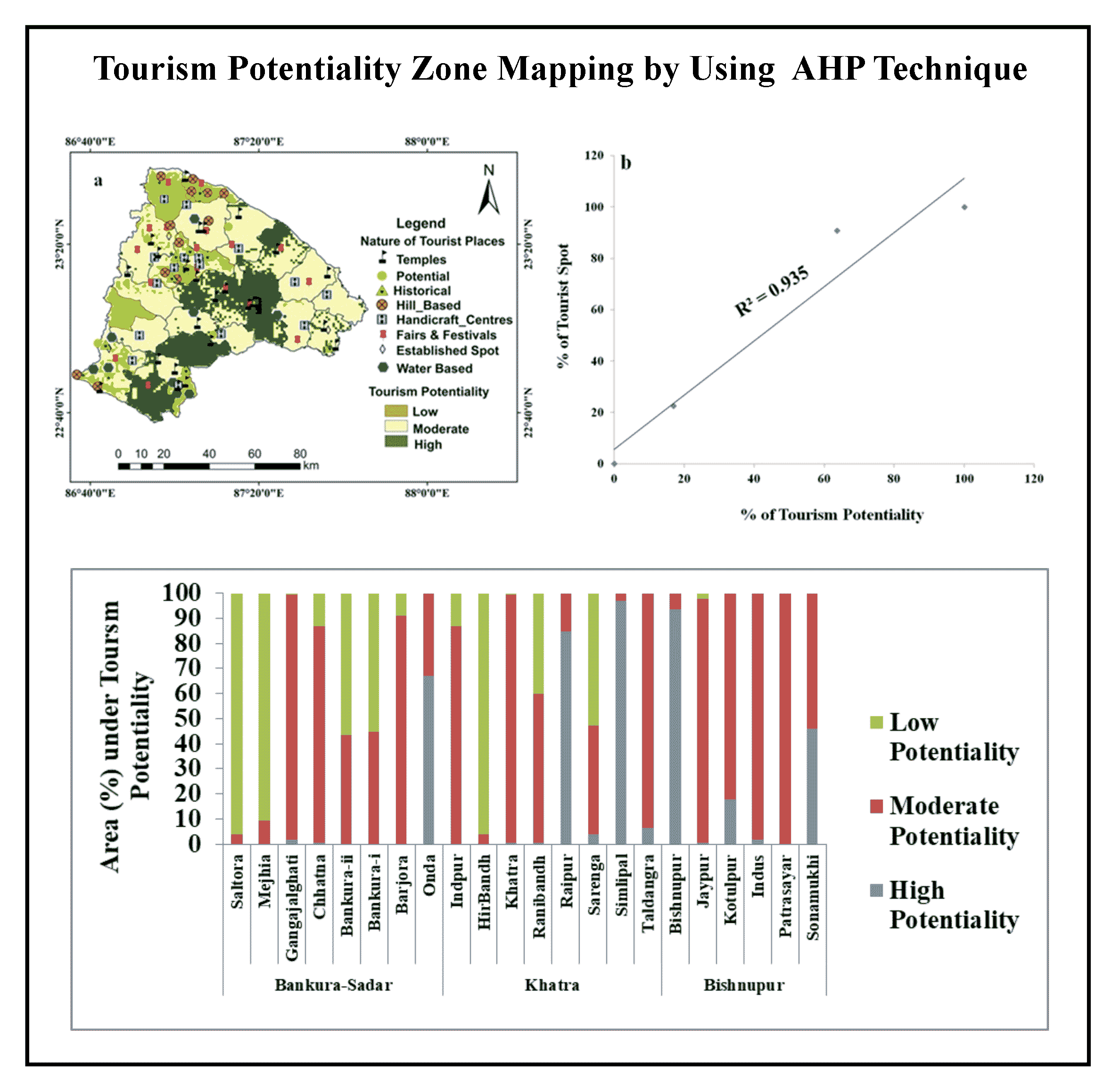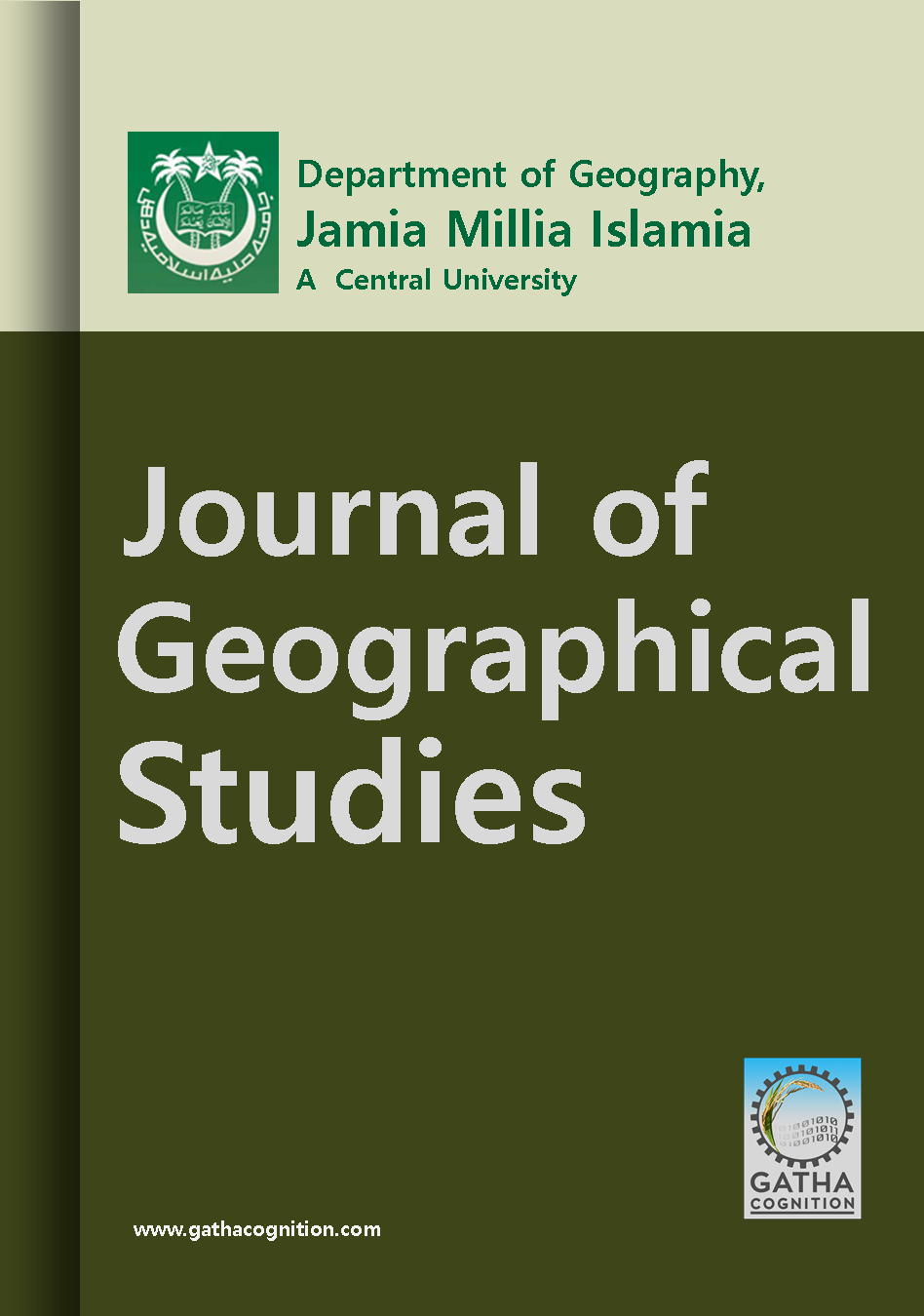Article Title :
Pune City’s Microclimate: An Assessment of Selected Local Climate Zones Using ENVI-Met 
8 (2024)
1-17
Simulation , Air Temperature , Mean Radiant Temperature , ENVI-met , Local Climate Zones


The urban fabric of Pune city has undergone massive changes due to diversifying urban functionalities. The study attempts to identify different urban morphological landscapes within the city based on Local Climate Zones (LCZs) configurations. After identification of urban morphology in accordance with the LCZ scheme, the microclimatic simulations for the performance and attenuation of the meteorological parameters that is air temperature (Ta), relative humidity (RH), mean radiant temperature (Tmrt), and wind speed (WS) was accomplished through ENVI-met during the warmest month for the city. The urban landscapes characteristics similar to the proposed LCZ configuration and to collect field data for the chosen meteorological parameters ground survey was done. In addition to field observations, climatological normals and long-term trends for the meteorological parameters were also analyzed. The simulation results revealed that barren lands are warmer (by ~18℃) than the compact city core due to the heat sink effect. For Ta and RH the simulation is more reliable in case of open LCZs (R2~0.9) compared to compact LCZs (R2~0.5). With changing LCZs, there is no significant change in the simulation except continuous underestimation of the Tmrt and the role of wind flow in modifying Tmrt was noticed.

Analysis of micro-climatic variation over various urban morphology is done on the basis of local climate zone.
ENVI-met model is used for the simulation of meteorological parameters over the local climate zones.
The shading effects of buildings in the compact built-up zones are significantly decreasing the air temperature.
Shading of buildings are also actively reducing the mean radiant temperature of the compact built-up areas.
Wind flow is restricted by the urban morphology which results in points of abrupt high relative humidity.
Crank, P. J., Middel, A., Wagner, M., Hoots, D., Smith, M., Brazel, A., 2020. Validation of seasonal mean radiant temperature simulations in hot arid urban climates. Sci. Total. Environ. 749, 141392.
Ingalhalikar, S., Barve, A., 2010. Trees of Pune. Corolla Publication.
Ozkeresteci, I., Crewe, K., Brazel, A. J., Bruse, M., 2003. Use and evaluation of the ENVImet model for environmental design and planning: An experiment on linear parks. South Africa. Proceedings of the 21st International Cartographic Conference: 10-16.
Santamouris, M., 2001. On the built environment-the urban influence. Santamouris, M., (Eds.), Energy and climate in the urban built environment. James and James, Science Publishers, 6-8
Shah, B., Ghauri, B., 2015. Mapping urban heat island effect in comparison with the land use, land cover of Lahore district. Pakistan. J. Meteorol. 11, 37-48.






